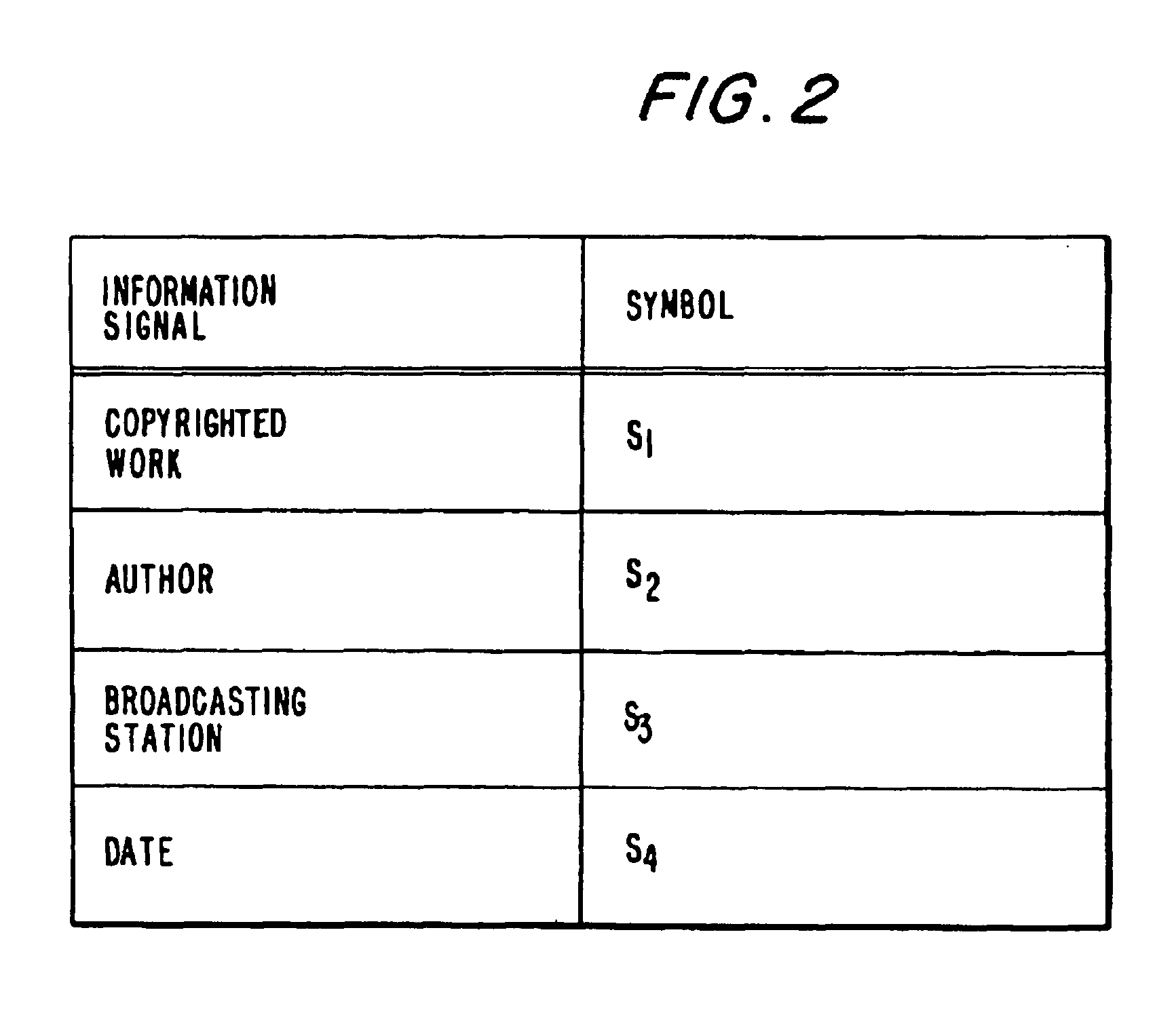Encoding and decoding of information in audio signals
a technology of information and audio signals, applied in the field of encoding and decoding information in audio signals, can solve problems such as difficulty in incorporating a code signal in an audio signal, burst errors during the transmission or reproduction of encoded audio signals, and burst errors may appear
- Summary
- Abstract
- Description
- Claims
- Application Information
AI Technical Summary
Benefits of technology
Problems solved by technology
Method used
Image
Examples
Embodiment Construction
[0027]The present invention relates to the use of especially robust encoding which converts information into redundant sequences of code symbols. In certain embodiments, each code symbol is represented by a set of different, predetermined single-frequency code signals; however, in other embodiments different code symbols may optionally share certain single-frequency code signals or may be provided by a methodology which does not assign predetermined frequency components to a given symbol. The redundant sequence of symbols is incorporated into the audio signals to produce encoded audio signals that are unnoticed by the listener but nevertheless recoverable.
[0028]The redundant code symbol sequence is especially suited for incorporation into audio signals having low masking capacity, such as audio signals having many low amplitude portions or the like. Additionally, when incorporated into audio signals, the redundant sequence of code symbols resists degradation by burst errors which af...
PUM
 Login to View More
Login to View More Abstract
Description
Claims
Application Information
 Login to View More
Login to View More - R&D
- Intellectual Property
- Life Sciences
- Materials
- Tech Scout
- Unparalleled Data Quality
- Higher Quality Content
- 60% Fewer Hallucinations
Browse by: Latest US Patents, China's latest patents, Technical Efficacy Thesaurus, Application Domain, Technology Topic, Popular Technical Reports.
© 2025 PatSnap. All rights reserved.Legal|Privacy policy|Modern Slavery Act Transparency Statement|Sitemap|About US| Contact US: help@patsnap.com



